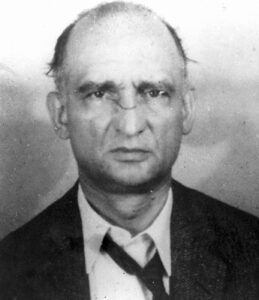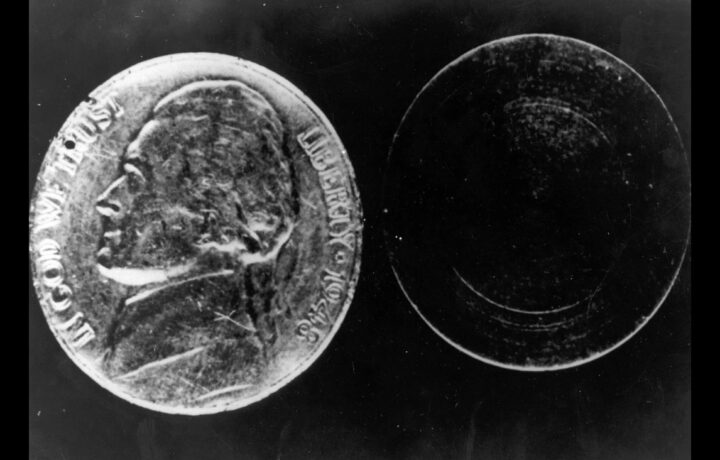On this day in history, June 22, 1953, a newspaper boy in the Bronx discovered a hollowed-out nickel in his change which contained a piece of microfilm. The microfilm had an array of numeric groups of five numbers each. Though the path would be circuitous, and took a good number of years, needed a Soviet illegal to volunteer to the CIA, and a good deal of counterintelligence investigative shoe leather. In the end, Colonel Rudolph Ivanovich Abel was identified, arrested, prosecuted, and convicted for espionage of in 1957 in New York City.
Who is Rudolph Abel?
Abel’s true name was William August Fisher. Though born in the UK in 1903, his family returned to the Soviet Union in 1921. The young Fisher was recruited into the NKVD in 1927 and dismissed in 1938. During the Second World War, Fisher took part in Operation Scherhorn (a radio deception operation). Following the war, he was brought back into the NKVD’s successor organization, the KGB, trained and deployed to the United States as an illegal.
Like many intelligence officers, especially illegal intelligence officers, he lived under an alias (in fact he used a plethora of aliases across the span of his career). From 1948 through 1950, he successfully ran a network of couriers moving stolen intelligence associated with the Manhattan Project.
He operated under the radar, living in a small non-descript hotel room and working out of a “photographer’s studio.” While the arrest and prosecution of Julius and Ethel Rosenberg caused a hiccup, it did not derail Abel. There is little doubt that left to on his own, his tradecraft and attention to detail would have allowed him to continue, undetected. Yet that was not to be, as Moscow Center decided he needed an assistant and sent a KGB officer, who the KGB had documented under his true name, Reino Häyhänen.
Häyhänen, Abel’s Achilles Heel
Upon arrival in 1951 in New York, Häyhänen took some time to establish himself and then once settled, was instructed to make a signal to Abel and then unload a dead drop establishing contact. That he did and when he went to the dead drop site, he found a nickel. He put it in his pocket, and apparently went on to use it in a transaction. For the next two years, the nickel circulated throughout New York, until 1953 when the newspaper boy accidentally dropped his change on the ground, and it popped open.
Häyhänen, as it turns out, was undisciplined, unruly, and his fondness for alcohol made him unreliable. In a word, he was a “mess.” After five years of operating in the United States, and Abel’s request that he be recalled to Moscow, Häyhänen sailed out of New York on La Liberte, of the CGT French Line. Upon arrival in France, he met with the KGB, was given money for his onward trip to Moscow. Instead, he met with the CIA, in an intoxicated state at the U.S. Embassy in Paris, volunteered his knowledge in exchange for asylum. The CIA was reticent, until he produced a hollowed-out Finnish 5-mark coin. A week later, he was back in the United States and being debriefed by the FBI.
Hollowed Nickel
Häyhänen went on to identify a plethora of Soviet personnel, including Abel, U.S. assets of the KGB, and a myriad of locations. He also solved “The Mystery of the Hollow Nickel.” On June 21, 1957, Abel was arrested, and a variety of espionage paraphernalia was found in his hotel room and studio – shortwave radio, microdots, cipher pads, concealment devices, and several thousand U.S. dollars. He was tried, convicted, and sentenced in October 1957 to 30 years.
On February 10, 1962 Abel was exchanged for U-2 pilot Francis Gary Powers at the Glienicke Bridge. This bridge would become known as the “Bridge of Spies.” During the subsequent years, he was known to have lectured on his experiences living the life of an illegal in the United States. He died at the age of 68 in the Soviet Union.
About the microfilm?
The microfilm’s number groups would eventually be decoded. It was an innocuous “welcome to New York” message to Häyhänen. He testified against Abel at the latter’s trial and was resettled in the United States. He died in 1961 in an automobile accident on the Pennsylvania Turnpike.

Soviet Spy Rudolf Abel




